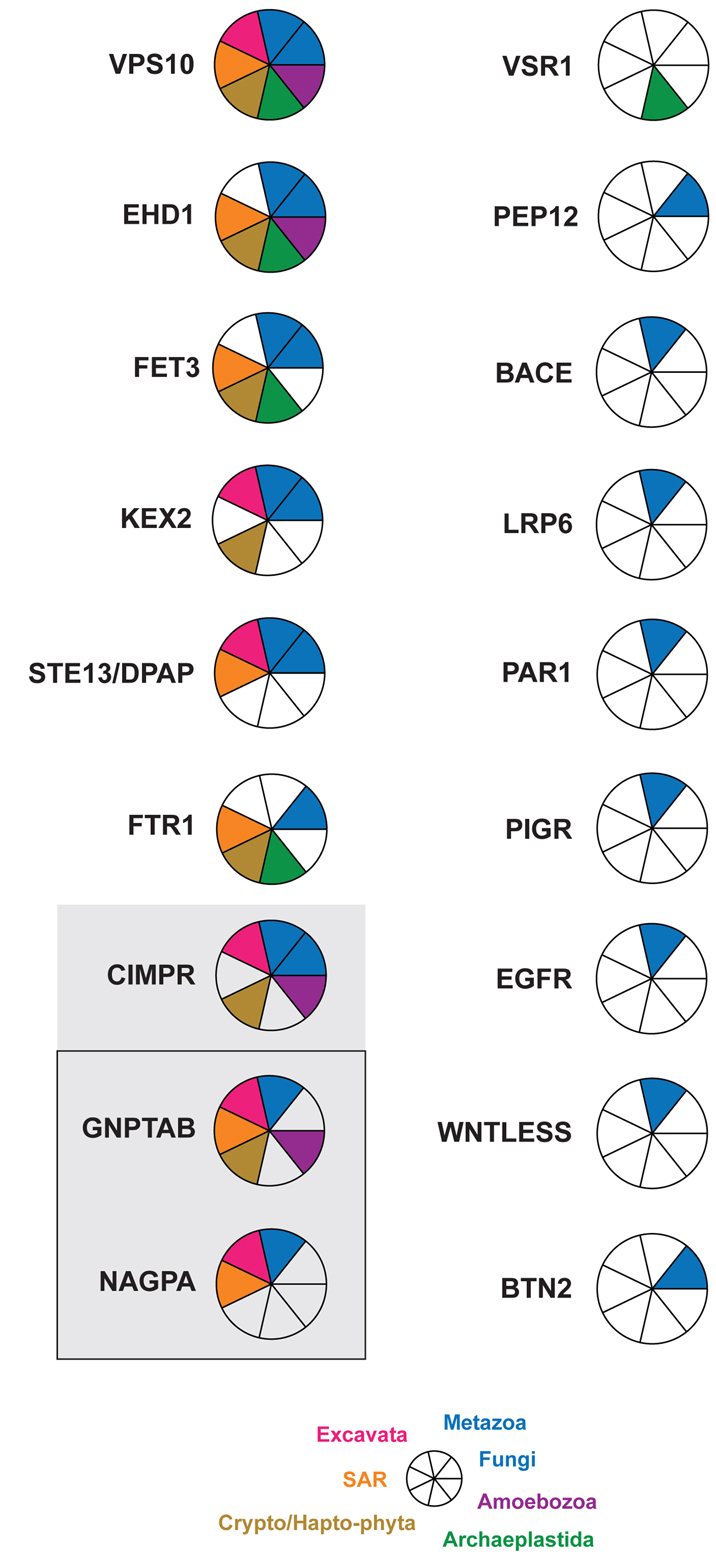Fig. 9.

Distribution of proteins previously identified as interacting with retromer across the range of eukaryotic lineages. Large taxon groupings are colour coded (key at bottom). Filled sectors indicate the presence of a protein in the respective supergroup, on the basis of a clear reverse BLAST; white sectors indicate that the protein was not found. Accession numbers are in supplementary material Table S2. Protein name abbreviations and selected references relating to their interaction with retromer are as follows: Vps10, vacuolar protein sorting 10, similar to mammalian sortilins (Seaman et al., 1997); EHD1, Eps15-homology-domain-containing protein-1 (Gokool et al., 2007); STE13 (DPAP), dipeptydyl aminopeptidase (Nothwehr et al., 1999; Nothwehr et al., 2000); KEX2, killer expression defective 2 serine protease (Nothwehr and Hindes, 1997); FET3, ferrous transport 3 (Strochlic et al., 2007); FTR1, Fe transporter 1, forms part of the yeast reductive iron transporter with Fet3 (Strochlic et al., 2007), PEP12, carboxypeptidase-Y-deficient 12 (Hettema et al., 2003); CI-MPR, cation-independent mannose 6-phosphate receptor (Arighi et al., 2004; Seaman, 2004); VSR1, vacuolar sorting receptor 1 (Yamazaki et al., 2008); BACE, β-secretase, also known as memapsin 2 (He et al., 2005); LRP6, lipoprotein-receptor-related protein 6 (George et al., 2007); PAR1, protease-activated receptor-1 (Gullapalli et al., 2006); PIGR, polymeric immunoglobulin receptor (Verges et al., 2004; Verges et al., 2007); EGFR, epidermal growth factor receptor (Gullapalli et al., 2004); wntless, G-protein-coupled receptor 177 or Wnt receptor (Eaton, 2008); BTN2, Batten disease protein 2 (Kama et al., 2007). Also included are results of searches for GNPTAB and NAGPA, enzymes required for synthesis of mannose 6-phosphate (boxed).
